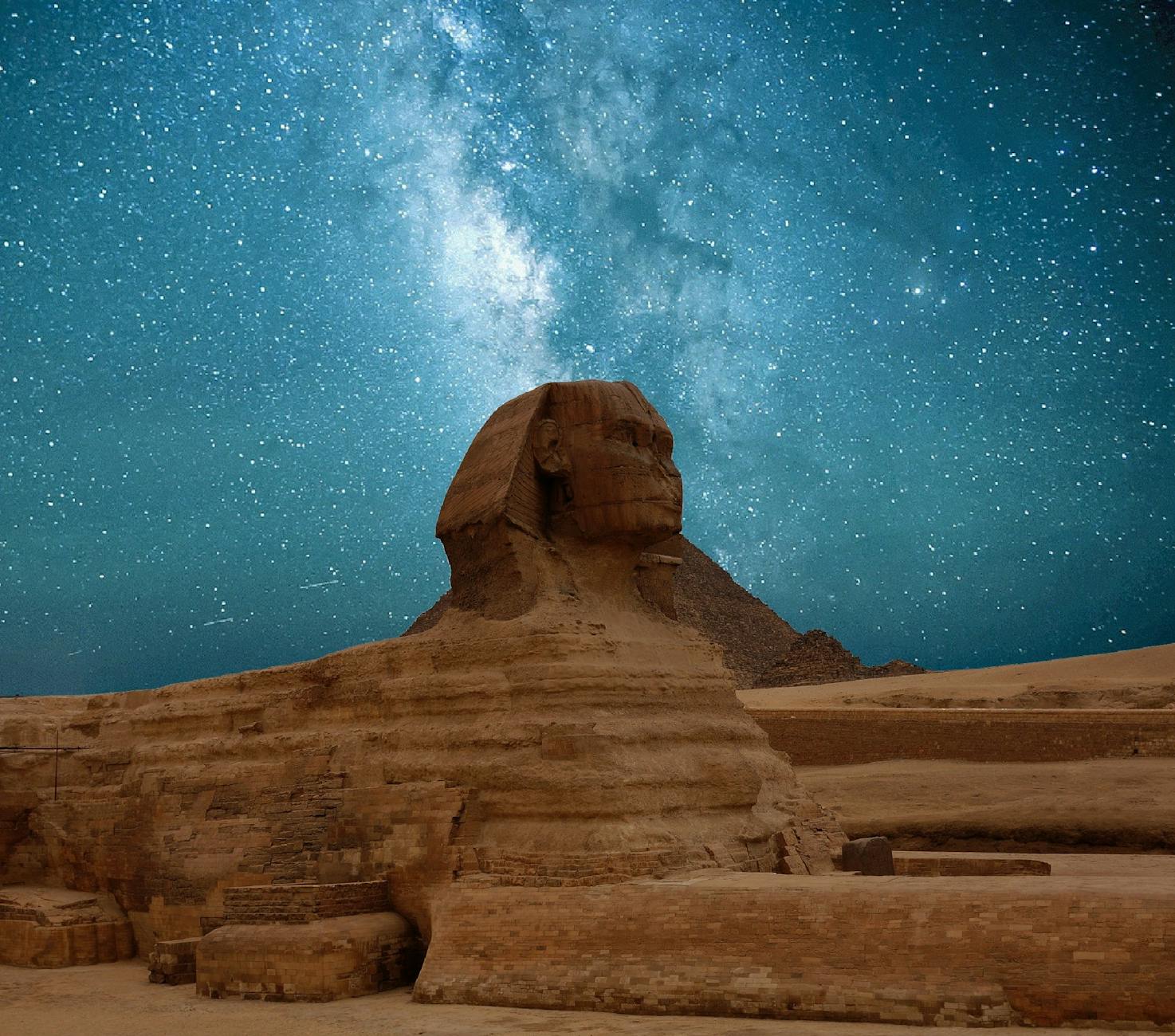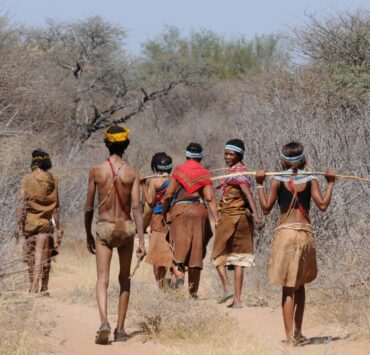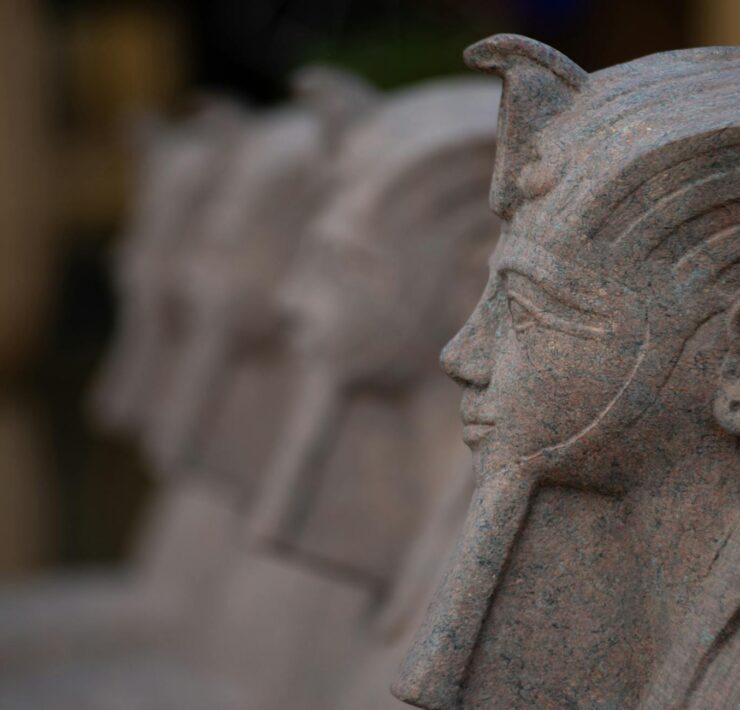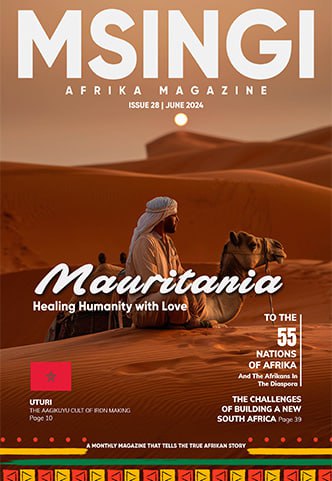The African Cosmology (Part One)

Dr. Bhengu is an Independent Researcher on Afrikan philosophy, Afrikology…
The Kamitic Tree of Life

Written by Grisso, courtesy of Mfuniselwa Bhengu. End note by Samuel Phillips
In a previous writing, The Ancient Wisdom in Africa, we saw that there exists a learned society which the Zulus call the Bonaabakulu Abasekhemu, whose members come from among all the many peoples of Africa, and whose origins may be traced to a priest of Isis during the reign of Pharaoh Khufu, the 3rd dynasty (3900 BCE) builder of the Great Pyramid. In this article, I try to address in a brief space the core concepts of the Kamitic cosmology, and show correspondences to the teachings of the Bonaabakulu Abasekhemu, and moreover to the Yoruba religion.
The Kamitic Tree of Life
| R |
a Un Nefer Amen has reclaimed for us some of the core Kamitic spiritual teachings and precepts. The key teachings have been diagrammed in what has come down to us and is known as the Tree of Life.
The Tree of Life is a diagram of the process through which God creates the world, Man, and Man’s sojourn in the world. The Tree consists of eleven spheres, numbered from zero to 10. Sphere 0 is at the top, and is depicted as being “above” the tree. It depicts and corresponds to the state of God and of existence before the creation of the thingly, phenomenal world. In the Kamitic tradition, this aspect of God was known variously as Amen, Atum, Aten, Nu, and Nut. As it has come down to the Zulu through the Bonaabakulu Abasekhemu, it corresponds to what they call the Itongo as Bowen has told us.
Amen, or The Source, or The Itongo
The essential state of God or of existence before creation is of an undifferentiated Potential — the primordial mist. There are two dual principles which characterize the Amen: One is the principle of Mind, the other is the principle of Matter. The principle of Mind is itself dualized into Consciousness and Will. Consciousness represents the passive polarity, and Will the active polarity, of the same essential quality.
The principle of Matter may be seen as a continuum, which may more properly be called Energy/Matter, because “matter” in the strict sense is but one extreme of that continuum, being “energy-slowed-down.” Implicit in that notion is the fact known to Western science at least since Einstein, namely that energy and matter are mutually transmutable. As reflected at Sphere 0 above the Tree, the essential quality of Mind is a state of bliss, peace, hetep, the Kamitic word for a state of unshakable inner peace. The essential quality of Matter, at Sphere 0, in the state of Amen, is that of pure Potential, which means there is as yet no motion, [Note: The Hindu word nirvana also characterizes the state of Amen, and means, literally, “no motion” (nir = “no” + vana = “motion”).] no vibration, no “things”, therefore no space, and no time. There is also no light, since light is a vibration, and there is no motion.
Mind/Matter Duality Parenthetically, and somewhat paradoxically, the energy/matter continuum (i.e. the Matter principle) properly includes Spirit. In the grand dichotomy between Mind and Matter, Spirit falls under the category of Matter rather than of Mind. Spirit is fundamentally energy, and the medium through which Mind expresses itself. Since individuated spirits also are associated with individuated Mind (Consciousness/Will), loose usage of the term “spirit” sometimes, indeed usually, refers also to Mind. Strictly speaking, however, spirit is energy, and thus distinct from Consciousness/Will (hence Mind) which may in various senses manipulate spirit. It follows from this schema, that the grand dichotomy here called that between Mind and Matter, could also properly have been rendered as the dichotomy between Mind and Spirit, for matter, too, as “energy-slowed-down,” is but a form of spirit. But such a usage would do too much violence to the common understanding of these matters, and the usage that goes with it. In common usage, we speak of body, mind, and spirit as all being distinct, certainly to the best of the ability of our senses to perceive these distinctions. At the same time, we use the term “spirit” as a common noun to refer to individuated “souls” that have given up the body, but which retain as an essential attribute the attribute of Consciousness/Will, or Mind. Given the potential for ambiguity, I stick with Mind/Matter as being the fundamental dichotomy, but with the clear understanding that Spirit, qua energy, falls under the category Matter. The concept of soul, in relation to that of spirit, is a tricky one, and will be addressed later on, in the context where it is most easily explained.
The peace of hetep is an “inner” peace, because it is a state that is considered still to lie somewhere within Man. It is not to be found in the material (energy/matter) principle of the universe, rather in the mind principle. Therefore it lies within. It is an aspect of existence that is inherently indivisible: when you get to “it,” there is nowhere further to “go.” I believe Amen has speculated somewhere in his writings that Democritus imperfectly understood this Kamitic concept of “Atum,” and sought to apply it to matter. It is from this misconception that Western science found its way to the notion of the atom, as being the smallest indivisible particle of a substance. No sooner was the atom discovered, however, it turned out that it contained yet smaller constituent particles of stuff. There is apparently no end to the proliferation of yet smaller sub-atomic particles. Kamitic spiritual science confidently predicts that the fundamental building block — in a delicious irony of metaphor — of matter, is not matter at all, but the energy polarity of the energy/matter principle. The wave/particle duality of photons, and of sub-atomic particles, is a manifestation of the energy/matter principle, namely that energy and matter are mutually transmutable. Be that as it may, the state of hetep, in terms of the mind aspect of Being, is the ultimate state of pure inner peace. In terms of the matter aspect of Being, it is the ultimate state of pure, quiescent, energy-as-potential. Both, together — quiescent mind, and quiescent matter (energy, really) — constitute the Kamitic concept of the Creator before creation. This is Amen, and the Source from which all comes. It is also, in the Kamitic spiritual science, the true nature of the hidden God within, which is essentially unconditioned, and which cannot be upset by externals. It is represented at Sphere 0 above the Tree of Life. In the Yoruba tradition, that aspect of God represented by Sphere 0 is called Olodumare. It is also what, as we have seen, the Zulu call the Itongo.
The Purpose Of Creation
If the true nature of God, the Source, is Amen, and is essentially unconditioned and undifferentiated, the question arises why did God create the thingly world of differentiation in which Man dwells, and further, why did he create Man. The Kamitic scripture says of God in the state of Amen: “I was alone; not born were they.” Amen (1996) quotes this scripture to explain that God created the world in order to have experience. And It created Man in order to have a vehicle within the world with the same essential qualities as Itself. Man is in this sense created “in the image of God.” Further, as Bowen informs us, the Bonaabakulu Abasekhemu teach that Man is on a journey of return to the Source, to the Itongo, to the state of Amen. Man, in his gross, physical aspect, and the thingly world in general, is represented by Sphere 10 at the bottom of the Tree. Sphere 10 thus represents the end-result of creation. Spheres 1 to 9 in-between represent the functional stages of creation, as well as the various aspects of the spiritual being which is also part of Man’s nature. Not only does the Tree of Life represent the unfolding of Creation, it represents also the way back, sphere by sphere (or branch by branch), for Man’s spiritual return journey.
The Functional Stages of Creation, and the Aspects of Spirit
Spheres 1 to 9, or the Ennead, in addition to representing the functional stages of creation, also represent archetypal deities which exhibit the qualities most pertinent to the functional stage of creation with which respectively they are identified. At the level of Man, these same archetypal energies find expression as archetypal personality types, of which each of us is in some sense a blend. The Tree of Life is to be understood as but a model of many interpenetrating realities: of deities, of aspects of the psyche, of functional aspects of creation, among others not yet addressed. Each of the spheres of the Tree is described briefly in turn.
Omnipresence/Central Theme. Sphere 1 on the Tree corresponds to God manifest in the world, and is the mirror image of sphere 0 above the tree. That is to say, where Sphere 0 represents God un-manifest, or the “hidden” God, Sphere 1 on the Tree represents God in the world. Sphere 1 represents that highest aspect of Man’s spirit which is as yet unawakened in all of us, with the exception of certain adepts or “God-men on earth,” such as Jesus, Buddha, and the “Higher Ones” of the Bonaabakulu Abasekhemu. Sphere 1 represents the “Divine Spark” (Ubuntu) within all of us. The challenge is to raise and establish our individuated Consciousness in the part of Spirit corresponding to Sphere 1. According to the African cosmology, this is a process that takes countless incarnations, but whether knowingly or unknowingly, it is a journey on which we all are embarked. The aspect of Creation and of Spirit corresponding to Sphere 1 on the Tree is called Ausar in the Kamitic tradition. In the Yoruba tradition, it is called Obatala. The defining attribute of God manifest in the world is omnipresence. By extension, the principle of omnipresence is also the principle of the central theme, as that which infuses every aspect of a thing, or reality, hence Ausar and Obatala are the deities which govern the head, and clarity of vision, purpose, etc.
Omniscience/Divine Will.
Sphere 2 on the Tree of Life represents the attribute of omniscience. The deity represented by Sphere 2 of the Tree is called Tehuti, sometimes Djehuti, in the Kamitic tradition. As already mentioned, Tehuti was known to the Greeks as Thoth. It is this faculty of all-knowing that forms the basis for all divination, which is a method by which Man may communicate with the deity of the second Sphere — the Oracle, or the deity through which Ausar speaks. The deity of Sphere 2 may speak to Man through any variety of vehicles, for example, through the toss of coins, as with the I Ching, the drawing of stalks, the toss of bones, the reading of tea leaves, the toss of cowrie shells, and the drawing of cards from a deck. Ra Un Nefer Amen has reclaimed for us the Great Oracle of Tehuti, who speaks, so to say, through cards similar to the Tarot. In the Yoruba pantheon, Orunmila is the deity responsible for all divination (Ifa is related, and is the name given to the system of divination used by the babalawos of the Yoruba, as well as the traditional religion practiced by the Yoruba.) It is through Sphere 2 that the will of God may be made known. In addition to divination systems, the omniscience faculty of the Creator may be made manifest through living sages and adepts who have been able through spiritual cultivation or through Divine assistance, to establish their Consciousness at the part of Spirit represented by Sphere 2 on the Tree.
It also happens in African religious systems that a deity may “possess” an initiate. Under such possession, the initiate’s Consciousness is displaced, and the Consciousness of the deity “takes over” the initiate’s bodily vehicle. In that state, the deity is able to speak to those who seek or require counsel.
Omnipotence/The Power Of Creation.
Sphere 3 of the Tree represents the omnipotence aspect of the Creator. If it is out of Sphere 2 that Ausar expresses the faculty of all-knowing, it is out of Sphere 3 that Ausar brings into being that which is Willed out of Sphere 2. The deity represented by Sphere 3 of the Tree was called Sekert by the Kamau, and is called Obaluaye in the Yoruba tradition. The Kamitic spiritual science holds that creation is brought about by Word, invocation, or vibration. Thus Sphere 3 also represents words of power, or mantra. These were called hekau (singular: heka) by the Kamau. The original Godly vibration which created the (our) world was said to be aung. That initial Godly word of vibration was emitted from that aspect of the Creator represented by Sphere 3. The Kamitic scripture has God saying: “I brought into my mouth my own name, that is to say, a word of power, and I, even I, came into being in the form of things which came into being, and I came in the forms of the Creator.” Since creation of the thingly universe brings into being structure, also limitation by inference, Sekert and Obaluaye are identified with the foundations of things. One calls on Sekert or Obaluaye to help establish firm and enduring foundations. At the same time, since nothing lasts forever in the thingly world, Sekert and Obaluaye are also identified with cycles, and since no new cycle begins unless an old one has died, Sekert and Obaluaye are also identified as much with death as with creation. But this is not as morbid as it may seem to the Western mind, for within the African cosmology, death is not seen as final, rather as transition. At any rate, Sekert and Obaluaye preside over funerals and cemeteries, and the skull is one of their totems.
Divine Law/Truth, Harmony, The Interdependence Of All Things.
Sphere 4 of the Tree of Life represents that aspect of the Creator corresponding to the laws of existence for the things of creation. This is Divine Law. In the Kamitic tradition, the deity represented by this Sphere is known as Maat (Ubuntu). In the Yoruba pantheon she is known as Aje Chagullia. The laws for which Maat is the expression govern both aspects of mind (Consciousness/Will), as well as aspects of matter (Energy/Matter). Thus Maat governs the principles of Divine Truth, Love, Justice, Balance, Harmony, Inter-dependence of all things, etc., as well as the laws of physics and of all energy/matter phenomena, which latter includes the laws governing spiritual phenomena. It is the feather of Maat that is used to weigh the heart at Judgement day.
Note from Samuel Phillips
To the mind of a Christian reading these words, it’s easy to think what has been said or shared goes against the Christian doctrine of the Tree of Life. And it’s ok to go against it, even though it does not. I believe there are lots of mysteries hidden in the Bible about many concepts that have been unveiled in African spirituality. Or if you want to put it in another way, those who “rewrote” or canonized the Bible might have intentionally used the “edit” to veil the teachings of African spirituality. But for what purpose? So that you don’t see.
Take for instance the concept of Amen, according to this article, Amen is “The essential state of God or of existence before creation is of an undifferentiated Potential — the primordial mist. There are two dual principles which characterize the Amen: One is the principle of Mind, the other is the principle of Matter…” But according to the Bible, Amen is the “Beginning of the creation of God”. Revelation 3:14. That is, the revealing of “Mind” and the “Matter” state of God or Existence. That is the first physical or seen reality of the Unseen. This is why the first things which were created were “The Word” and the “Light”. And both are one and the same.
Is it possible that African spirituality in its true pure state, might just be the practical side of the teachings of the Bible?
What's Your Reaction?
Dr. Bhengu is an Independent Researcher on Afrikan philosophy, Afrikology and Egyptology. He is an established and experienced author, self-publisher and managing director of Phindela Publishing Group & Editor-in-Chief of INQABA Journal, a quarterly publication that specializes on Afrikology. He describes himself as an Afrikan of Nguni (Zulu) extraction, but then a global citizen. Black, but being in total fusion with the world, in sympathetic affinity with the Earth... “I am black not because of a curse, but because my skin has been able to capture all cosmic eluvia. I am truly a drop of the sun under the earth.” He says.


















